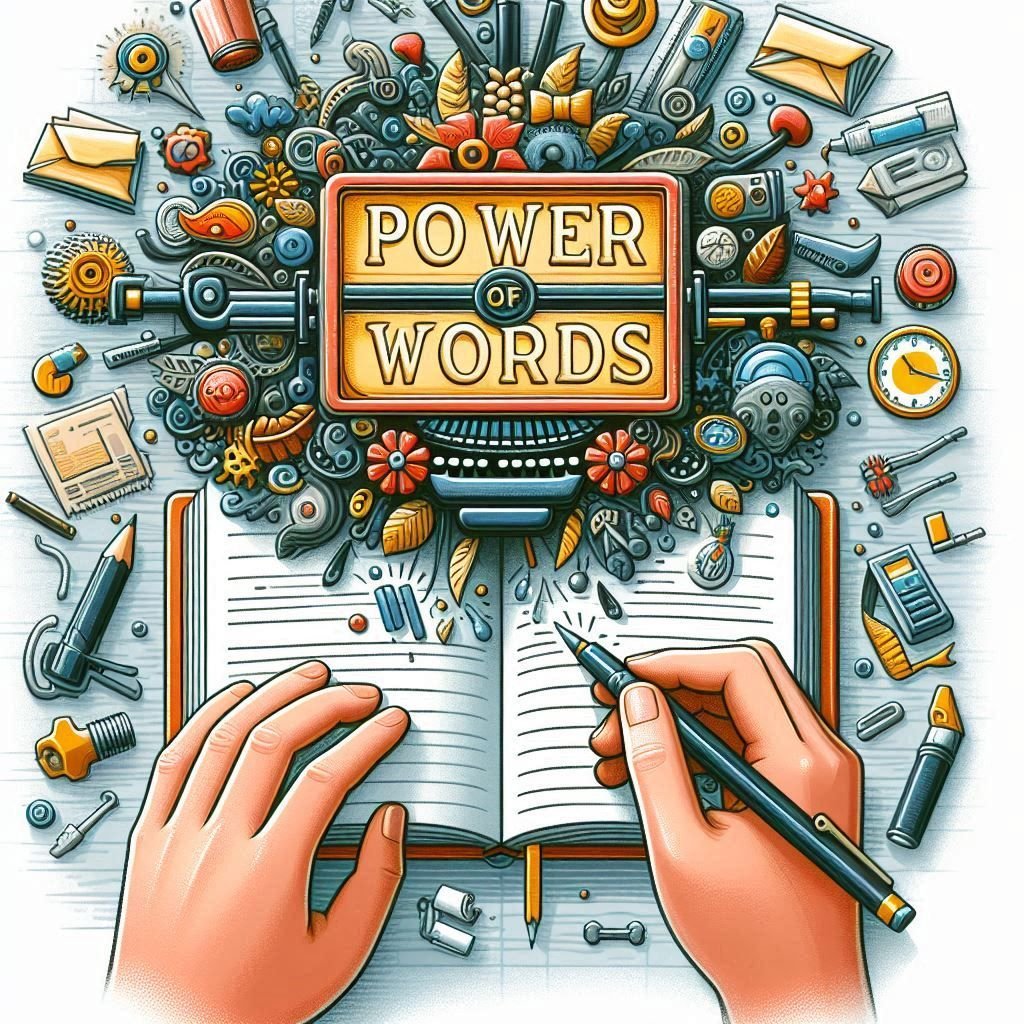Mastering Microsoft Word: Essential Tips and Tricks for Beginners
Introduction to Microsoft Word
Microsoft Word is one of the most widely used word processing software in the world. Its features are essential for creating professional documents, making it a must-have skill for students, professionals, and businesses. Learn more about Microsoft Word.
Getting Started with Microsoft Word
Starting with Microsoft Word can be intimidating, but familiarizing yourself with the basic functions will make the process smoother. Let’s dive into the essential steps to get you started. Microsoft Support offers a comprehensive guide for beginners.
1. Interface Overview
The Microsoft Word interface consists of various elements such as the Ribbon, Quick Access Toolbar, and Status Bar. Understanding these components is crucial for efficient navigation. Custom Guide’s Quick Reference provides a detailed overview.
2. Creating and Saving Documents
To create a new document, click on ‘File’ and select ‘New’. To save your document, use the ‘Save As’ feature. This ensures your work is stored securely on your device or cloud. For more detailed instructions, visit Microsoft Office Support.
Essential Tips and Tricks
Enhancing your Microsoft Word skills involves mastering various tips and tricks that can improve your productivity and the quality of your documents. Below are some key tips and tricks for beginners.
3. Keyboard Shortcuts
Keyboard shortcuts can significantly speed up your workflow. Common shortcuts include Ctrl+C for copy, Ctrl+V for paste, and Ctrl+Z for undo. Explore more shortcuts on Microsoft’s official site.
4. Formatting and Styles
Using styles and formatting options can make your document more readable and professional. Apply headings, bold text, and bulleted lists to enhance the structure of your document. Check out GCF Global’s tutorial for more details.
| Shortcut | Function |
|---|---|
| Ctrl + C | Copy |
| Ctrl + V | Paste |
| Ctrl + Z | Undo |
| Ctrl + B | Bold |
5. Using Templates
Templates can save you time and provide a professional look to your documents. Microsoft Word offers a variety of templates for different purposes, such as resumes, letters, and reports. Explore templates on Office.com.
6. Collaboration Features
Microsoft Word allows you to collaborate with others in real-time. You can share your document and work together with your team, making edits and leaving comments. For more information, visit Microsoft Support.
Advanced Features for Enhanced Productivity
Once you are comfortable with the basics, exploring advanced features can further enhance your productivity and the quality of your documents.
7. Mail Merge
Mail Merge is a powerful feature for creating personalized documents such as letters and emails. It allows you to combine a standard document with a data source, like an Excel spreadsheet. Learn how to use Mail Merge on WikiHow.
8. Macros
Macros can automate repetitive tasks in Microsoft Word, saving you time and effort. You can record a macro and then run it to perform a series of actions automatically. Find out more on Microsoft Support.
9. Customizing the Ribbon and Quick Access Toolbar
Customizing the Ribbon and Quick Access Toolbar allows you to access frequently used commands quickly. This can improve your efficiency and streamline your workflow. For a step-by-step guide, visit How-To Geek.
Customizing the Ribbon and Quick Access Toolbar
**Customizing the Ribbon and Quick Access Toolbar** allows you to tailor Microsoft Word to your specific workflow needs. By adding frequently used commands, you can streamline your work and boost productivity. Here’s a step-by-step guide to customizing these features. For a comprehensive tutorial, visit How-To Geek.
1. Customizing the Ribbon
To customize the Ribbon, follow these steps:
- Go to the **File** tab and select **Options**.
- In the Word Options dialog box, select **Customize Ribbon**.
- On the right side, you’ll see the list of **Main Tabs**. You can add a new tab by clicking on **New Tab**.
- To add commands to your new tab, select a command from the left list and click **Add**.
- You can also remove or rearrange commands as needed.
- Click **OK** to save your changes.
For a visual guide, check out this Microsoft Support article.
2. Customizing the Quick Access Toolbar
The **Quick Access Toolbar** (QAT) provides quick access to your most frequently used commands. Here’s how to customize it:
- Click the dropdown arrow at the end of the QAT.
- Select **More Commands** from the dropdown menu.
- In the Word Options dialog box, choose commands from the left pane and click **Add** to move them to the QAT.
- You can also reorder commands by selecting a command and using the **up** and **down** arrows.
- Click **OK** to save your changes.
For more details, visit this Lifewire guide.
| Action | Description |
|---|---|
| New Tab | Create a custom tab on the Ribbon for easy access to frequently used commands. |
| Add Command | Add specific commands to your new tab or the QAT for quicker access. |
| Reorder Commands | Rearrange the order of commands in your custom tab or QAT to suit your workflow. |
| Save Changes | Ensure your customizations are saved by clicking OK in the Word Options dialog box. |
By customizing the Ribbon and Quick Access Toolbar, you can create a more efficient and personalized working environment in Microsoft Word. For further reading and advanced tips, check out PCWorld’s in-depth article.

Pros and Cons of Customizing the Ribbon and Quick Access Toolbar
Customizing the Ribbon and Quick Access Toolbar in Microsoft Word can greatly enhance your productivity and make your workflow more efficient. However, like any feature, it comes with its own set of advantages and disadvantages. Let’s explore them in detail. For further insights, visit How-To Geek.
Pros
Customizing these features can bring numerous benefits to your document creation and editing process:
- Increased Efficiency: Having your most frequently used commands easily accessible can save time and reduce the need to navigate through multiple tabs.
- Personalized Workflow: You can tailor the Ribbon and QAT to suit your specific needs and preferences, creating a more intuitive working environment.
- Improved Productivity: Streamlining access to essential tools and functions can enhance overall productivity and document creation speed.
- Reduced Frustration: Minimizing the need to search for commands can decrease frustration and make the software more user-friendly.
For more on the benefits, check out this PCWorld article.
Cons
Despite the advantages, there are some potential drawbacks to customizing the Ribbon and QAT:
- Initial Setup Time: Customizing the Ribbon and QAT requires an initial time investment to set up according to your preferences.
- Learning Curve: Users new to customization might find the process complex and may need time to get used to the new setup.
- Over-customization: Adding too many commands can lead to a cluttered interface, potentially making it harder to find the most important tools.
- Consistency Issues: If you use multiple computers or share documents with others, different customizations can lead to inconsistencies and confusion.
For tips on managing these drawbacks, visit Lifewire.
| Pros | Cons |
|---|---|
| Increased Efficiency | Initial Setup Time |
| Personalized Workflow | Learning Curve |
| Improved Productivity | Over-customization |
| Reduced Frustration | Consistency Issues |
By weighing the pros and cons, you can decide if customizing the Ribbon and Quick Access Toolbar is the right approach for enhancing your Microsoft Word experience. For additional insights and tips, explore Microsoft Support.
FAQs: Customizing the Ribbon and Quick Access Toolbar in Microsoft Word
Customizing the Ribbon and Quick Access Toolbar in Microsoft Word can help you work more efficiently. Here are some frequently asked questions to help you get started. For more detailed information, visit Microsoft Support.
Q1: How do I add commands to the Quick Access Toolbar?
To add commands to the Quick Access Toolbar, click the dropdown arrow at the end of the toolbar and select **More Commands**. Choose the commands you want to add from the left pane and click **Add**. Click **OK** to save your changes. For step-by-step instructions, visit Lifewire.
Q2: Can I create my own tab on the Ribbon?
Yes, you can create your own tab on the Ribbon. Go to the **File** tab, select **Options**, and then **Customize Ribbon**. Click on **New Tab** to create a new tab and add the commands you want. For more details, check out this How-To Geek article.
Q3: How can I reset the Ribbon and Quick Access Toolbar to their default settings?
To reset the Ribbon and Quick Access Toolbar to their default settings, go to **File** > **Options** > **Customize Ribbon**. Click on **Reset** and select **Reset all customizations**. This will restore the original settings. For more information, visit PCWorld.
Q4: Can I export my Ribbon and Quick Access Toolbar customizations?
Yes, you can export your customizations. Go to **File** > **Options** > **Customize Ribbon** and click on **Import/Export**. Choose **Export all customizations** to save your settings to a file, which you can then import on another computer. For a detailed guide, see Microsoft Support.
Q5: What are the benefits of customizing the Ribbon and Quick Access Toolbar?
Customizing these features allows you to access frequently used commands quickly, personalize your workflow, improve productivity, and reduce frustration. For more benefits, check out this PCWorld article.
Q6: Can I customize the Ribbon and Quick Access Toolbar in all versions of Microsoft Word?
Most modern versions of Microsoft Word, including Word 2010, 2013, 2016, 2019, and Office 365, support customizing the Ribbon and Quick Access Toolbar. For version-specific instructions, visit Microsoft Support.
Disclaimer and Caution
When navigating the digital landscape, it’s crucial to understand the importance of **disclaimers** and **cautionary statements**. These elements protect both website owners and users by clarifying responsibilities and potential risks. For a comprehensive overview, visit LawDepot.
Understanding Disclaimers
**Disclaimers** are statements that limit the liability of website owners by highlighting the scope and limitations of the information provided. They are essential in managing user expectations and protecting against legal claims. For detailed guidelines, see TermsFeed.
Types of Disclaimers
There are several types of disclaimers, each serving a unique purpose:
- General Disclaimer: States that the information is provided “as is” without warranties of any kind.
- Medical Disclaimer: Clarifies that the content is not intended as medical advice and should not replace professional consultation.
- Legal Disclaimer: Informs users that the content does not constitute legal advice and encourages seeking professional counsel.
- Earnings Disclaimer: Indicates that any financial claims or results are not guaranteed and can vary.
For more examples, visit WebsitePolicies.
Why Disclaimers are Important
**Disclaimers** play a vital role in safeguarding your website and business:
- Legal Protection: Shields you from potential lawsuits by clarifying your responsibilities.
- Transparency: Builds trust with users by being upfront about the limitations of your content.
- Compliance: Ensures you adhere to relevant laws and regulations.
For further reading on the significance of disclaimers, see this UpCounsel article.
Implementing Effective Disclaimers
To create effective disclaimers, consider the following steps:
- Identify the specific needs and risks of your website.
- Draft clear and concise language to communicate the disclaimer.
- Consult with a legal professional to ensure compliance.
- Regularly review and update your disclaimers to reflect any changes.
For detailed steps, check out this Rocket Lawyer guide.
Cautionary Statements
**Cautionary statements** alert users to potential risks associated with the use of your website or products:
- Safety Warnings: Inform users about potential hazards and safety precautions.
- Usage Instructions: Provide clear instructions to ensure proper use of products or services.
- Risk Disclosure: Highlight any risks involved in using your website or services.
For more on cautionary statements, visit The Balance.
Examples of Cautionary Statements
Here are some common examples of cautionary statements:
- Product Use: “Use this product only as directed. Misuse may cause injury.”
- Medical Advice: “Consult your physician before starting any new exercise program.”
- Financial Risk: “Investing involves risk. Past performance is not indicative of future results.”
For a variety of examples, see this Business News Daily article.
| Disclaimer Type | Purpose | Example |
|---|---|---|
| General Disclaimer | Limits liability by stating information is provided “as is.” | “The information provided on this website is for general informational purposes only.” |
| Medical Disclaimer | Clarifies content is not medical advice. | “This website does not provide medical advice. Consult a healthcare professional.” |
| Legal Disclaimer | Informs that content is not legal advice. | “This content is not intended to be a substitute for professional legal advice.” |
| Earnings Disclaimer | Indicates financial results are not guaranteed. | “Results may vary. Earnings are not guaranteed.” |
For a detailed guide on drafting disclaimers and cautionary statements, explore TermsFeed’s blog.





